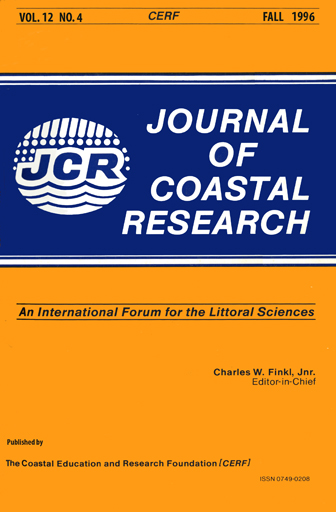Digital Ground Penetrating Radar (GPR): A New Geophysical Tool for Coastal Barrier Research (Examples from the Atlantic, Gulf and Pacific Coasts, U.S.A.)
Keywords:
Barrier island, geophysics, coastal stratigraphy, coastal sedimentsAbstract
Although digital ground penetrating radar (GPR) is still in its infancy, results indicate that it will soon become one of the most significant geophysical instruments for coastal barrier studies. GPR can infer stratigraphic trends, and therefore directions of progradation and/or aggradation, delineate sedimentary facies, and determine depth to the fresh-brackish water interface in shallow freshwater conditions (i.e., Galveston Island). Internal structure of barriers consisting of sand, broken shell fragments and boulder-gravel in Georgia, Florida, Texas, Oregon and Washington States are illustrated using GPR. Seaward dipping reflections (1-23°) from paleo-beach surfaces occur to depths of 12m. Severe signal loss is noted on all barriers at approximately the level of the low tide. Gulf Coast barriers have thin freshwater lenses (< 4 m), below which brackish water attenuates electromagnetic energy. In contrast, the best results are from high wave energy and high tidally-influenced (3.7 m) Pacific clastic sand and barriers with paleo-beach dips of 1-2° to 12 m deep. A boulder-gravel beach at Seaside, Oregon, has good results with inclined reflections of 23° to 12 m deep. Shelly beaches at Anastasia Island, Florida exhibit semi-continuous seaward inclined reflections (3-6°) to depths of 6 m.


